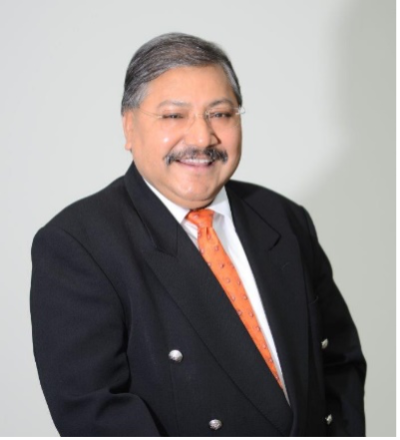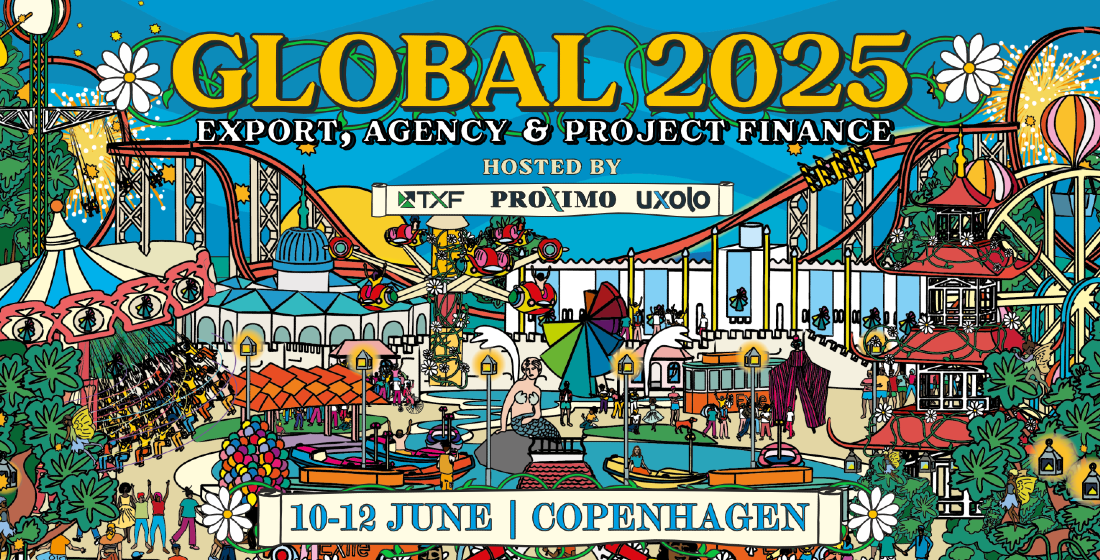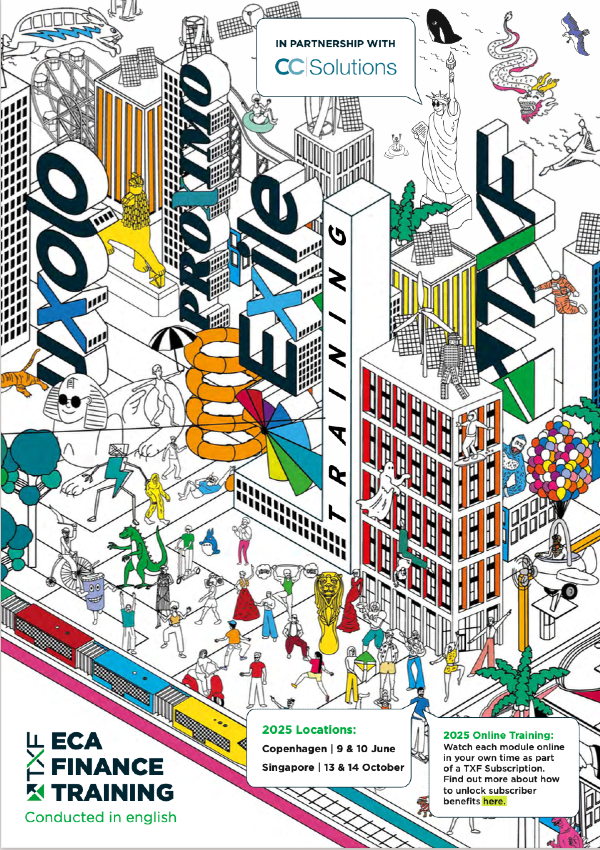Keynote: Crescent Petroleum on realising carbon transition
Neeraj Agrawal, group chief financial officer at Crescent Petroleum, discusses the importance of gas in the carbon transition and the company’s financing strategy amid the rising challenge of balancing climate imperatives with energy supply resilience.

TXF: What issues are top of mind for you at the moment in terms of what is most challenging for your sector, and what is it you are most optimistic about?
 Neeraj Agrawal (NA): The energy crisis has become a major global development, growth and prosperity crisis and has underscored the importance of the resilience of national energy supply and infrastructure. We cannot expect the developing world to consume less, when so many have not even begun to consume in the first place. Primary energy demand continues to grow faster than the rate at which renewable energy, which is itself intermittent, has been able to deliver new supply. It is predicted that a quarter of a billion more people will be in extreme poverty this year. Therefore, delivering affordable and responsible energy is now an even more critically important challenge than ever.
Neeraj Agrawal (NA): The energy crisis has become a major global development, growth and prosperity crisis and has underscored the importance of the resilience of national energy supply and infrastructure. We cannot expect the developing world to consume less, when so many have not even begun to consume in the first place. Primary energy demand continues to grow faster than the rate at which renewable energy, which is itself intermittent, has been able to deliver new supply. It is predicted that a quarter of a billion more people will be in extreme poverty this year. Therefore, delivering affordable and responsible energy is now an even more critically important challenge than ever.
What can we learn from this crisis? One important lesson is that the path to the carbon transition is just as important as the destination itself. Move too quickly to cut off traditional sources of power, and the supply shortfalls will have immediate and negative impacts.
It is therefore encouraging to see the EU’s designation of natural gas as a transition fuel, as this helps a sector that has traditionally faced tight capital constraints. I am optimistic that capital providers will respond positively to high commodity prices which will enable new long-term investments to materialise, instead of doing nothing which only encourages shareholders to take high dividends.
TXF: Transitioning the hydrocarbon sector is still a key priority for many countries, to what extent are you helping with the transition?
NA: Transitions are not about just about moving from ‘fossil-led’ to ‘fossil-free’ but as fundamental transformations that enhance the productivity of our resources and improve our lives.
At Crescent, we have long recognised the role natural gas must play as this transition catalyst. Gas delivers securely and reliably both as a less polluting alternative to space heating in homes as well as being highly adaptable and capable of being used in industrial processes.
The gas produced at our operations in the Kurdistan Region of Iraq (through Pearl Petroleum), has enabled the region to avoid more than 42 million tonnes of carbon dioxide by displacing liquid fuels in power generation, where it burns cleaner than regular oil or coal.
Large scale solar and wind-power are two promising examples of where the future lies; however, as they are intermittent and electrical energy cannot currently be stored in bulk, stable energy sources such as natural gas are still needed to complement them.
As another example, switching to gas from coal-fired generation, particularly in India and China, where coal use is growing fastest, would yield considerable savings in CO2 emissions to help meet targets. Subsidies now spent spurring renewables adoption would be better spent on helping accelerate that switch.
TXF: To what extent are you being impacted by input costs rising/EPC cost inflationary pressures?
NA: Over the last few years, the pressures on upstream disinvestment, accelerated by the pandemic, has forced oil and gas service companies to undergo cost cutting, consolidation, and restructuring. Unsurprisingly the resulting global resource pool for rigs, fleet and talent is now struggling to meet upstream demand and add incremental capacity.
This difficulty is combined with rising input costs such as in energy-intensive steel as well as ongoing supply chain issues globally (for example, extremely high shipping costs) that were exposed by the pandemic. It is therefore likely that cost inflation will persist in the oil and gas sector even where upstream spending continues to decline over the longer term.
TXF: Can you tell me a little bit about your project pipeline – the projects you are investing in both on ports and energy. What is the balance, and how is this changing?
NA: Pearl Petroleum, a five-company consortium led by Crescent and our affiliate Dana Gas, drives our ambition to fully realise the immense potential of two world-class, high quality gas fields in the KRI. These fields are the Khor Mor field and the Chemchemal field. Since 2008, Pearl has provided clean natural gas from the Khor Mor field for local power generation. To date, we have delivered almost 400 million barrels of oil equivalent in natural gas and liquids to support regional growth.
Our current expansion project is the $630 million KM-250 project which will increase production capacity to over 700 million standard cubic feet per day, a 50% increase. This is on top of very successful process improvements that have enabled production growth of 70% from 2018 to 2022 despite the challenges of the pandemic. The next train after KM-250 is expected to start production in the mid-2020s bringing overall production to one billion standard cubic feet per day. The scheduled development of Pearl’s Chemchemal field is another significant source for future production growth.
In addition, we take environmental stewardship extremely seriously, Pearl is one of the first oil and gas companies to achieve net zero emissions through offsets for both 2021 and forecast for 2022. Meanwhile, ongoing process improvements to reduce natural gas flaring towards our zero target have helped overall carbon intensity fall to just one third of the global sector average.
TXF: To what extent is the war in Ukraine impacting your business? What do you think is going to happen to the energy demand mix, and to what extent is it affecting you?
NA: We recognise that this conflict did not cause the energy crisis but exposed the systemic problems resulting from the long-term lack of investment into our sector. Today, because of insufficient gas volumes to meet demand, global coal consumption grew 6% in 2021 and will only continue to increase this year.
While the crisis has marked Europe as the prime LNG import market in the coming years, longer-term declines in upstream spending mean that LNG supply will be very tight given the time required to invest in capacity to address these imbalances. As a result, I would expect to see periods of volatility and price uncertainty well into this decade.
By 2040, diversification and decarbonisation agendas could see global LNG demand rise from 400 million tonnes per annum today to 700 million tonnes per annum. This rapid growth in gas demand supports the role of the Gulf Region, the KRI, and Crescent as a major supply source given its strategic location in both.
TXF: One of the questions to be discussed at TXF’s Export Finance Dealmakers’ Assembly in Berlin is “are you ‘friend-shoring’ your supply chains?” How is this affecting Crescent?
NA: Crescent has always recognised the importance of maintaining strong relationships with key Western partners and institutions. This was seen, for example, by our 2021 agreement with the US Development Finance Corporation for a $250 million financing arrangement to support the gas expansion project at Khor Mor. This project, which will meet rising demand for clean natural gas, also represents the US government’s continuing investment in the infrastructure of the KRI, highlighting its support and confidence in the region and in our long-term prospects.
As the largest private sector upstream gas operation in Iraq, such factors serve to support Crescent in its aim to deliver energy resilience across the region.
TXF: You mention working with DFC in Iraq – are you optimistic for the prospects of more blended finance projects? Are you working with other multilateral lenders or ECAs? How is it working with them?
NA: As I mentioned, we have successfully secured a $250 million long- term loan with DFC in place in 2021 for our gas venture in Iraq. This has become a very strong relationship for both parties and we look to do more jointly with DFC in the future.
We are in contact with major ECAs, and our general impression is that there is a greater openness about supporting financing in Iraq. Nonetheless, the financing of any type of energy project is becoming more challenging given the ESG commitments (such as Paris Agreement, COP26, net zero ambitions) made by various ECAs and multilaterals.
In the light of the energy crisis, we believe that there should now be some greater awareness and appetite in ECA policy allowing some of these organisations to support gas projects in the very near future. We have also noticed that some ECAs differ in the stringency of their sourcing requirements with some very strict while others less. This is an important consideration in the light of the contractors with whom we wish to work.
Overall, ECAs and multilaterals will likely remain a key source of funding for the frontier/developing regions that we primarily focus on in geographies such as Iraq.
TXF: Is OECD Consensus reform needed/helpful?
NA: Some ECAs have a blanket ‘zero investment’ policy towards projects that may have a gas component. This is not helpful. We think every case should be judged on its wider merits given that gas is a recognised transition fuel. We do think we have a strong case to present that gas meets most countries’ CRO (Climate Resilience Office) needs and their strategic objectives in terms of their longer-term vision of supporting economic growth. We would recommend a greater degree of openness in terms of consensus requirements and a willingness to think outside the box.
TXF: Is your funding/financing mix likely to change?
NA: Given the lack of recent support by many multilaterals/ECAs/international banks for oil & gas financing, more and more companies in our sector have turned to equity and capital markets as their main sources of funding.
MENA banks in general remain open to funding oil & gas projects but often lack the expertise for more complex structured solutions. We would expect that capital markets (despite the higher interest/yield versus loan markets) will keep growing in significance for us as well to the detriment of the loan markets.
TXF: How has the Sukuk market been responding to recent events globally – are you working on any Sukuk financings? Do you use any form of insurance/guarantees in the Islamic markets?
NA: We are currently not active in the Sukuk markets and do not have insurance/guarantees in place in the Islamic market. Sukuk investors tend to primarily focus on investment grade/developed country issuers and currently there is significant unmet appetite in this segment of the market. Thus, investment grade issuers that qualify to issue Sukuks could likely achieve a slightly better pricing by issuing such an instrument relative to issuing a bond.





